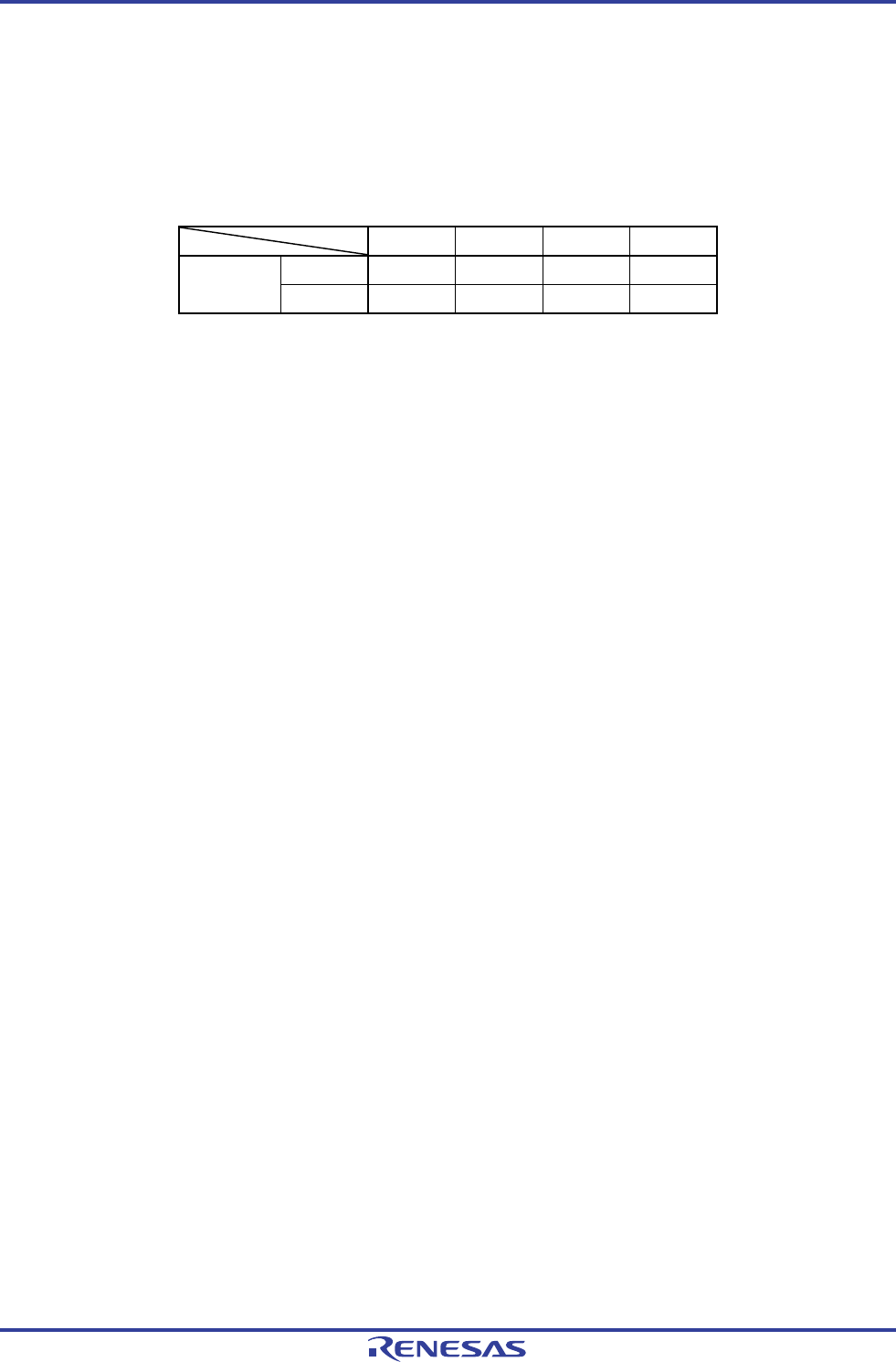
RL78/G1A CHAPTER 16 INTERRUPT FUNCTIONS
CHAPTER 16 INTERRUPT FUNCTIONS
The interrupt function switches the program execution to other processing. When the branch processing is finished, the
program returns to the interrupted processing.
The number of interrupt sources differs, depending on the product.
25-pin 32-pin 48-pin
64-pin
External
5 6 10 13
Maskable
interrupts
Internal
24 27 27 27
16.1 Interrupt Function Types
The following two types of interrupt functions are used.
(1) Maskable interrupts
These interrupts undergo mask control. Maskable interrupts can be divided into four priority groups by setting the
priority specification flag registers (PR00L, PR00H, PR01L, PR01H, PR02L, PR02H, PR10L, PR10H, PR11L, PR11H,
PR12L, PR12H).
Multiple interrupt servicing can be applied to low-priority interrupts when high-priority interrupts are generated. If two
or more interrupt requests, each having the same priority, are simultaneously generated, then they are processed
according to the default priority of vectored interrupt servicing. Default priority, see Table 16-1.
A standby release signal is generated and STOP, HALT, and SNOOZE modes are released.
External interrupt requests and internal interrupt requests are provided as maskable interrupts.
(2) Software interrupt
This is a vectored interrupt generated by executing the BRK instruction. It is acknowledged even when interrupts are
disabled. The software interrupt does not undergo interrupt priority control.
16.2 Interrupt Sources and Configuration
Interrupt sources include maskable interrupts and software interrupts. In addition, they also have up to seven reset
sources (see Table 16-1). The vector codes that store the program start address when branching due to the generation of
a reset or various interrupt requests are two bytes each, so interrupts jump to a 64 K address of 00000H to 0FFFFH.
R01UH0305EJ0200 Rev.2.00 688
Jul 04, 2013


















